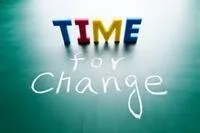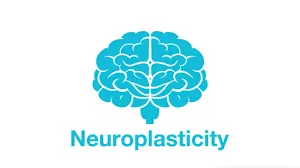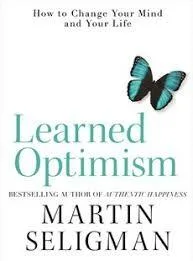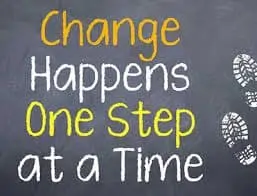We are what we repeatedly do. Excellence, then, is not an act, but a habit. (Aristotle)

Clients come to therapy in hopes of changing something about themselves, their spouse, boss, parents, kids, circumstances, etc. Most of the time it’s about changing someone other than themselves.
Can and do people change? Yes, without a doubt. Evidence points to it. We are constantly changing — physically, mentally, emotionally and spiritually.
Brain studies reveal extraordinary neuroplasticity enables you to change neuropathways and, thus, habits and behaviors. Neuroplasticity basically refers to your brain’s ability to change and restructure its neural networks.

Up until the 1980s or early 1990s, most scientists believed that your brain developed in your early years throughout childhood and was pretty developed by the age of 25. But with the new science of neuroplasticity, it implies that people of any age have the ability to learn new things and form new habits. With the understanding that change is indeed possible, you’re able to focus on the ways in which you’d like to change and grow instead of questioning whether or not it’s possible.
People can learn to think in resilient ways, and if they practice those ways of thinking, they can change. Thinking habits are skills, and like all skills, anyone can learn them.
"Only fools and dead men don’t change their minds.
Fools won’t. Dead men can’t." (John Patterson)
But Nicole doesn’t think her husband can change. She’s having thoughts of divorce because he’s not “changeable.” Married 32 years, “if he hasn’t changed in all these years he never will,” she states. He always has to be right.
Logan knows the definition of insanity well. He keeps repeating the same patterns over and over again and wonders why he’s never been happy at a job. He’s had four jobs in the past 6 years. But it’s usually the bosses fault or the company was the wrong fit. Yet he admits he’s never been a very optimistic kind of guy… something he claims he learned from his dad. He enters a new job believing it won’t work out. Guess what???

According to Martin Seligman, in his book, Learned Optimism, it’s no surprise that optimistic athletes, managers and teams do better. What's interesting is where they do better. It's in coming back from defeat and acting in the clutch. For Logan, he predicts the defeat before it happens in order to validate his pessimism it was not going to work out in the first place.
"Pessimism is not fixed and unchangeable."

Focus, procrastination, working hard, laziness, love, positive thinking, discipline and every other mental activity is a pattern – a neural pattern of thinking and acting in response to that.
For example, for many years it was thought that a person’s perception of events as optimistic or pessimistic was hardwired, meaning people had to deal with what they had because there was no way to change it. However, contemporary science says otherwise. And memory scientists report that “we are not wired to perfectly replay past events but to construct future scenarios in our minds.” So, we may delete some of the bad memories and insert a more optimistic viewpoint.
Real change requires work and effort. According to Bill O’Hanlon, LPC, motivation is the starting point for change. People not only need to want to change, you have to have the energy to change. So I will ask my clients on a scale of 1 to 10, with 10 being high, how motivated are you to make these changes?
One way to change the pattern of the problem is to simply do something different when you have the problem. Pay attention to what you usually do when you have the problem and do it differently.
"The first rule of holes: when you are in one, stop digging" (Molly Ivins)

We have the tendency to look at a problem in terms of a person or fixed entity instead of seeing it as a “pattern.” When working with couples I say to them, “She is not your enemy, and he is not your enemy. The enemy is the pattern the two of you have created.” Change the pattern and the problem/person changes.

Patterns can be changed because at one point, they never existed. Patterns are much easier to change than people. And people are more willing to make the changes because they now see it less as a personal attack on their character.
So my initial questions when clients come into my office goes something like this:
-
What are some repeating patterns in your life or relationship you’re unhappy with or frustrated by?
-
What’s the smallest change you could make in your problem situation (pattern) that might make a difference?
My hope is to get clients to focus on what they would like to happen “instead” of what has happened. What do they want instead? What small step could they take toward that goal or change? In other words, find what works and do more of it. Imagine who you want to be and then step towards it.
“ My interest is in the future because I’m going to spend
the rest of my life there.” (Charles Kettering)
Small changes matter. It leads to other changes. Positive change in one situation will lead to positive changes in other areas. It all begins with a single step.



